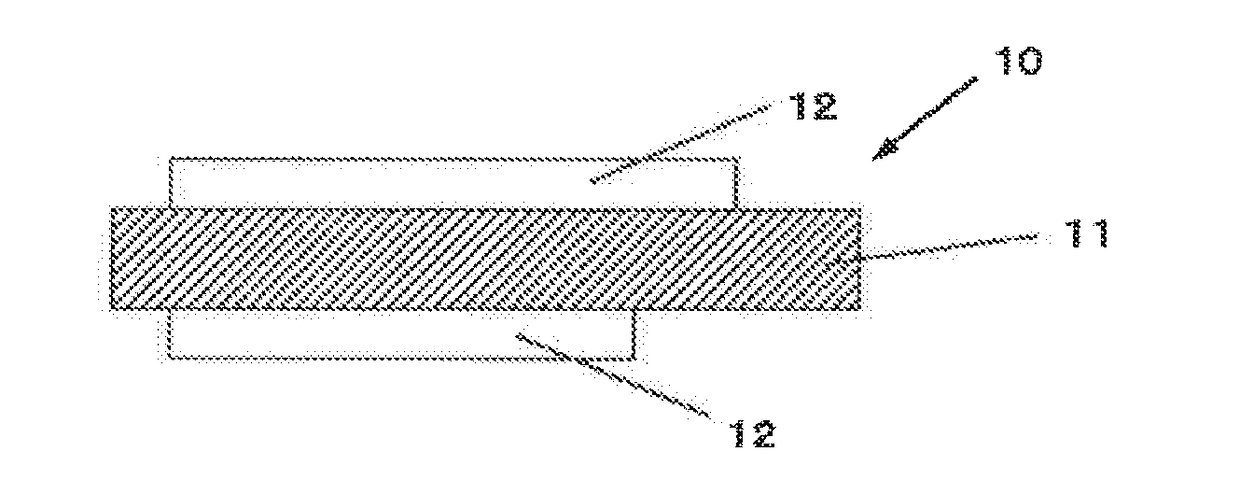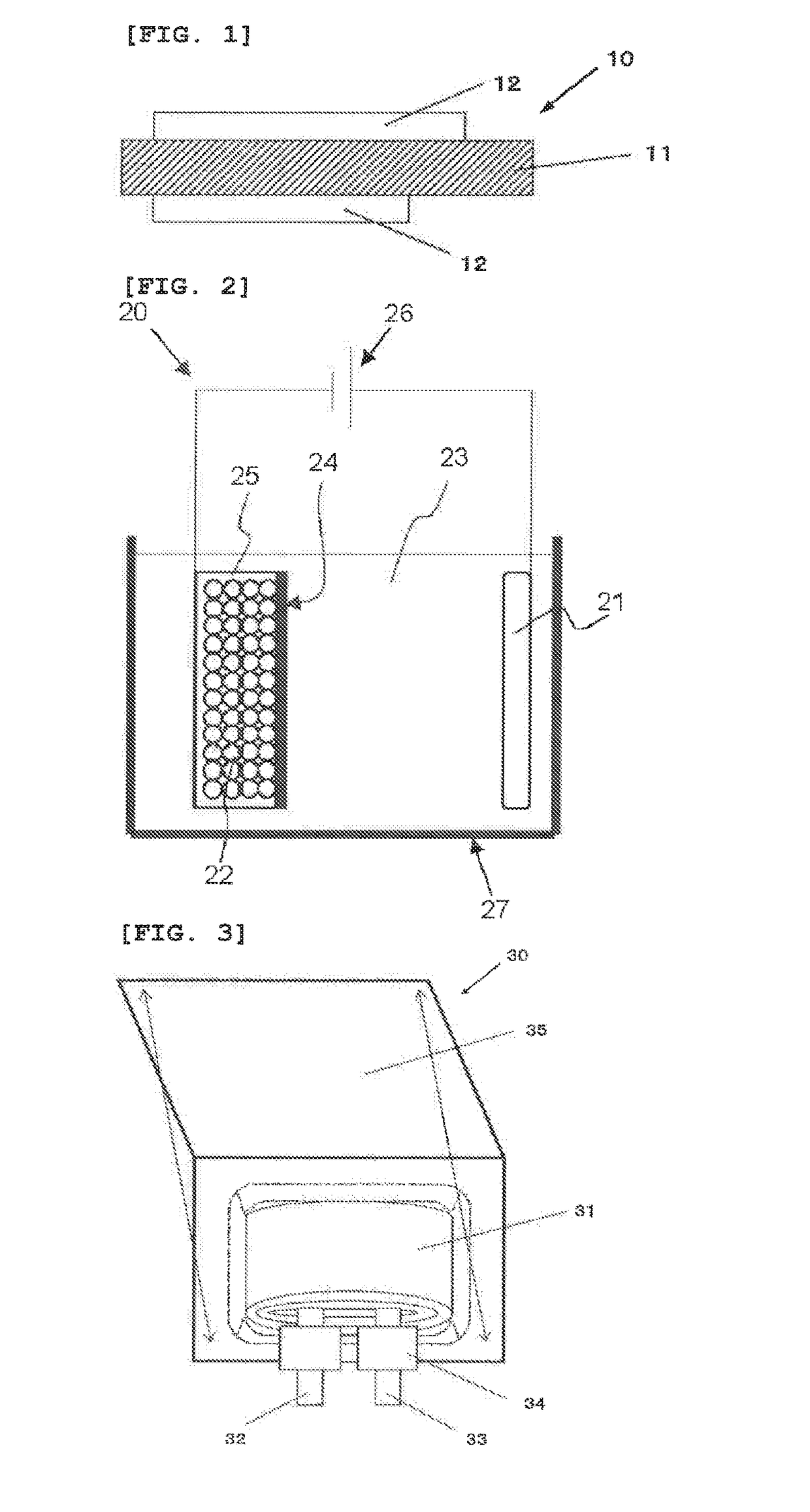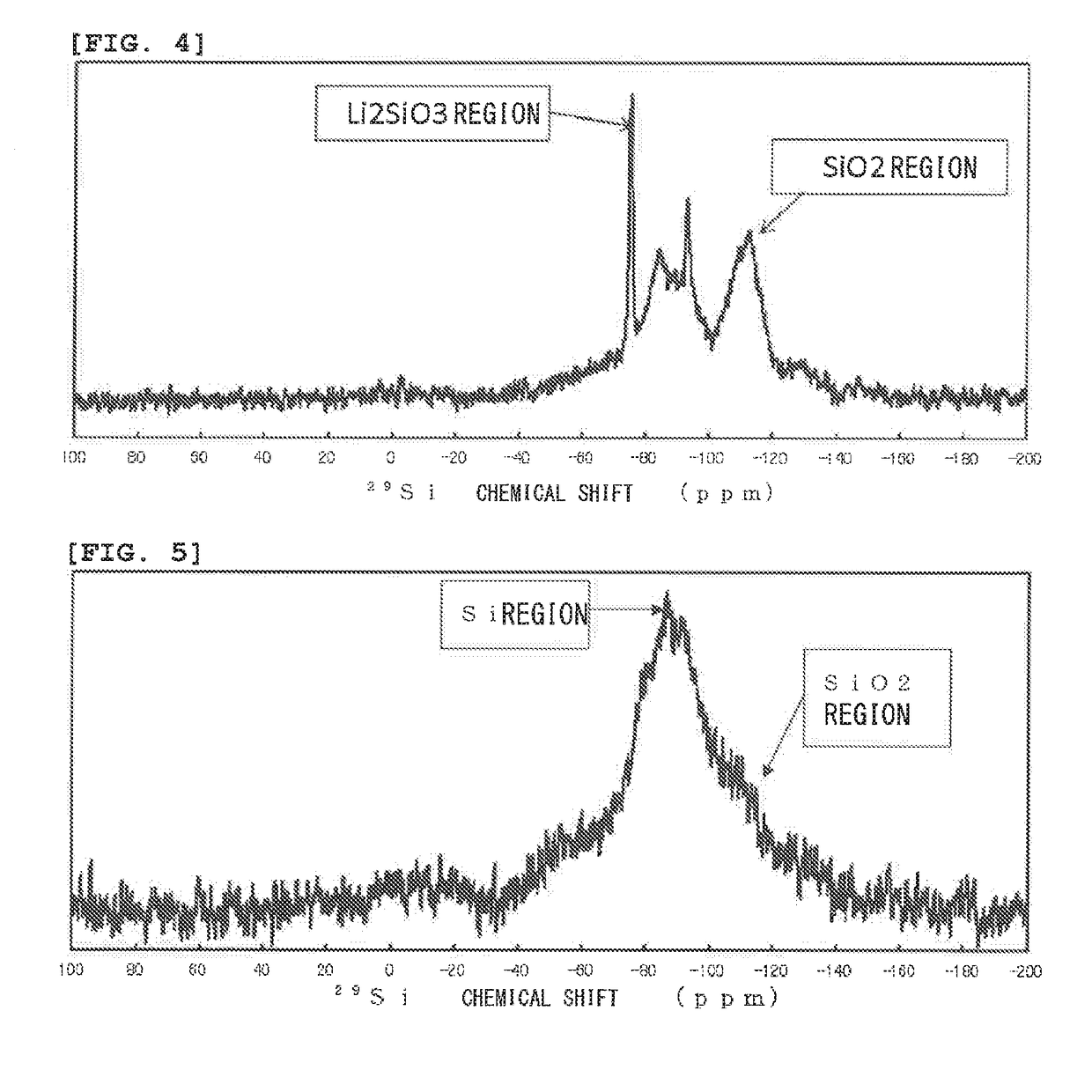Negative electrode active material for non-aqueous electrolyte secondary battery, non-aqueous electrolyte secondary battery, method for producing negative electrode material for non-aqueous secondary battery, and method for producing non-aqueous electrolyte secondary battery
a secondary battery and negative electrode technology, applied in the direction of batteries, cell components, silicates, etc., can solve the problems of negative electrode active material cracking, degrading cycle characteristics, and prone to cracking, so as to improve the stability of slurry, improve battery capacity, cycle characteristics, and improve initial charge/discharge characteristics. , the effect of improving the stability of the slurry
- Summary
- Abstract
- Description
- Claims
- Application Information
AI Technical Summary
Benefits of technology
Problems solved by technology
Method used
Image
Examples
example 1-1
[0139]According to the following procedure, the laminate film type secondary battery 30 shown in FIG. 3 was prepared.
[0140]At the beginning, a positive electrode was prepared. A positive electrode mixture was prepared by mixing 95 parts by mass of lithium-nickel-cobalt-aluminum composite oxide (LiNi0.7Co0.25Al0.05O), 25 parts by mass of a positive electrode conductive assistant (acetylene black), and 2.5 parts by mass of a positive electrode binder (polyvinylidene fluoride, PVDF). Subsequently, the positive electrode mixture was dispersed in an organic solvent (N-methyl-2-pyrrolidone, NMP) to form a paste-like slurry. Next, the slurry was applied on both sides of a positive electrode current collector by a coating device having a die head, followed by drying with a hot air drier. At this time, the positive electrode current collector having a thickness of 15 μm was used. At the end, compression molding was applied with a roll press.
[0141]Then, a negative electrode was prepared. Firs...
examples 1-2 to examples 1-10
[0152]Secondary batteries were prepared and the cycle characteristics were evaluated in the same procedure as in Example 1-1, except that compositions of the salt coating were altered as shown in Table 1, that is, except that kinds of the metal silicate and the metal salt contained in the salt coating were altered as shown in Table 1. Further, according to the same procedure as in Example 1-1, the initial efficiencies of the silicon-based active materials alone were calculated. The composition of the salt coating was altered by adjusting the kind of the metal salt dissolved in ethanol, a stirring time, and a temperature of a solution.
examples 2-1 and 2-2
, Comparative Examples 2-1 and 2-2
[0166]Secondary batteries were produced in the same manner as in Examples 1-3, except that an oxygen amount within bulk of the silicon compound was adjusted. In this case, a ratio of the vaporization starting material or a temperature was varied to adjust an oxygen amount. Values of x of the silicon compounds represented by SiOx in Examples 2-1 and 2-2 and Comparative Examples 2-1 and 2-2 are shown in Table 2.
[0167]Evaluation results of Examples 2-1 and 2-2 and Comparative Examples 2-1 and 2-2 are shown in Table 2.
TABLE 2SiOx, D50 = 4 μm, salt coating: aluminum perchlorate,aluminum silicate, lithium perchlorate 1.5% by massSiOx ratio 10% by mass (relative to active material), SiOx initialefficiency 80%, XPS atomic ratio two larger kinds C, OCarbon coating 5% by mass, dQ / dV with peak, half-value width (2θ)1.271°, crystallite 6.63 nm, modification method: thermal doping,A > B, with Li silicateCycleTime up toretentiongasXrate (%)generationSedimentation...
PUM
| Property | Measurement | Unit |
|---|---|---|
| binding energy | aaaaa | aaaaa |
| chemical shift | aaaaa | aaaaa |
| crystallite size | aaaaa | aaaaa |
Abstract
Description
Claims
Application Information
 Login to View More
Login to View More - R&D
- Intellectual Property
- Life Sciences
- Materials
- Tech Scout
- Unparalleled Data Quality
- Higher Quality Content
- 60% Fewer Hallucinations
Browse by: Latest US Patents, China's latest patents, Technical Efficacy Thesaurus, Application Domain, Technology Topic, Popular Technical Reports.
© 2025 PatSnap. All rights reserved.Legal|Privacy policy|Modern Slavery Act Transparency Statement|Sitemap|About US| Contact US: help@patsnap.com



